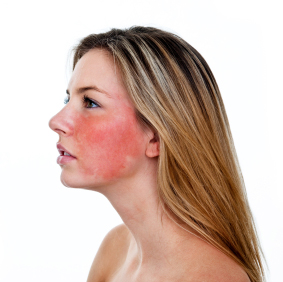
We’ll spare you the preamble about how difficult rosacea can be, because if you suffer from this chronic skin condition—and 16 million Americans do—then you know already that. You also know that preventing flare-ups is easier than getting rid of them. While individual triggers vary from person to person, experts do know that the warmer months typically worsen symptoms, which can include hard-to-hide redness, rashy bumps, and visible blood vessels.
Here’s help for keeping your symptoms in check as summer creeps in:
Cool off quick. Rosacea is greatly aggravated by heat. Patients not only cite more frequent bouts of redness, but they also last longer. When you feel your face heating up, grab a cold drink, suck on some ice, or apply a cold compress to your face to bring your skin’s temperature down.
Strengthen your sun protection. Everybody needs to shield their skin from the sun, but skin with rosacea is extra sensitive—even the slightest unprotected sun exposure can trigger an outbreak. If you’re going to be spending time outside, wear a hat, find an umbrella, and slather on some broad-spectrum SPF 30.
Arm yourself with aloe. Enlist the help of an aloe plant. Many find it beneficial to apply aloe directly from the plant (you just have to snap off a stem) to help quickly reduce inflammation by soothing and cooling the skin.
Track your triggers. If you’ve sought treatment for rosacea, you’ve heard that keeping track of flare-ups can help you figure out the best treatment. The National Rosacea Society suggests people suffering from rosacea to follow their patterns with the use of a rosacea diary.

 Dr. Rokhsar was chosen by
Dr. Rokhsar was chosen by 







